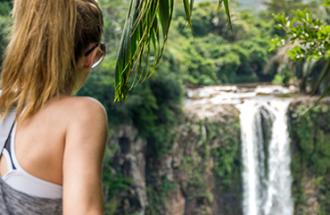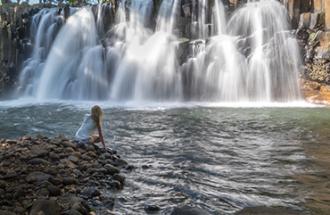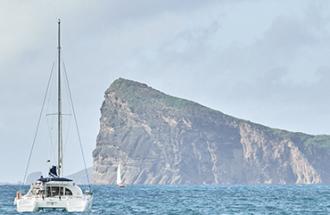History
Mauritius has so much to offer to history enthusiasts. From museums to historic and cultural sites, make the most of your holidays in Mauritius to take a step back in time, and walk in the footsteps of the different peoples who built this beautiful nation. For centuries, the island has seen the successive settlement of the Dutch, the French, the English, the Africans, the Indians and the Chinese, and the Arabs and Portuguese who stopped over here long before the arrival of the Dutch. A beautiful heritage bequeathed to the Mauritian population.
The Dutch were the first to really settle on the island as from 1598. They landed at Grand Port in the southeast, driven by a storm. They remained here until 1710 and left discouraged by the successive storms, the infestations of pests and epidemics. It is therefore in the south-eastern region, around Vieux Grand Port that you will see the remnants of this period. A memorial was also erected where they landed, next to Ferney. At Vieux Grand Port, the Frederik Hendrik Museum and the ruins relate the Dutch stay on the island. The island was named Mauritius – Ile Maurice after the Prince Maurice de Nassau.
On the way to Vieux Grand Port, stop at Pointe du Diable, also known as Pointe Canons, with its series of cannons installed by the French to defend this part of the island from the British invasion. Mahebourg, in the south-east of the island, contains a lot of vestiges of the history of Mauritius. The Naval Museum is a must to learn about the maritime history of the island; you will also find a memorial monument for slaves next to the waterfront and places used by them before the abolition of slavery, such as the Lavoir (wash house). At the entrance of Mahebourg, you will drive on the Cavendish Bridge, also known as the Ville-Noire Bridge, built under the British era in the early 20th century. Take a pause on the longest bridge of the island - 155 meters!
Museums are of course a very good way to discover the history of Mauritius. In addition to those of Mahebourg and Vieux Grand Port, most of the museums are located in Port-Louis, like the Natural History Museum, where you will discover the history of the famous Dodo, and the Blue Penny Museum with its famous exceptional stamps that have travelled across the world, among others. Also in the capital city, the Aapravasi Ghat, a UNESCO World Heritage Site, will reveal the history of Indian indentured labourers who arrived in Mauritius shortly after the abolition of slavery in 1835, through artefacts and testimonies from their descendants. This is exactly where these workers landed, hoping to find a better life on the island.
Slavery is also part of the history of Mauritius. The site that symbolises it the most is Le Morne site, classified as a UNESCO World Heritage site. It was on this imposing mountain that the runaway slaves, called the “maroons”, used to hide, and it is said that some of them preferred to jump from the top of the mountain rather than be caught. Slave communities have settled there over time. At the foot of the mountain there is a space dedicated to the memory of these slaves coming from Africa and Madagascar for most of them, with a historical reconstruction of scenes of life of the period and some sculptures. Visit the Intercontinental Slavery Museum (ISM) Mauritius Ltd website.
You might come across some intriguing monuments in coastal areas. These are the Martello Towers, circular stone defence towers built by the British during the first half of the 19th century to defend the island from their all-time enemies, the French. La Preneuse Martello Tower has been restored and transformed into a museum and is open to the public for guided tours.
History is also revealed through architecture. Fortunately, Mauritius still has some beautiful colonial or Creole style homes that testify of the country’s past, the oldest dating back to the 18th century. Most of these buildings are part of family legacies and some are open to the public, such as Maison Eureka in Moka and the Château de Labourdonnais in Mapou. You can also stroll around the streets of the capital city, in the vicinity of St Georges Street, to admire the few beautiful houses that have stood the test of time.
And if you want to learn more about what you came across during your holidays in Mauritius, you can get a wide selection of fascinating books on the history of the island in general or on specific periods or events, in all bookstores.




